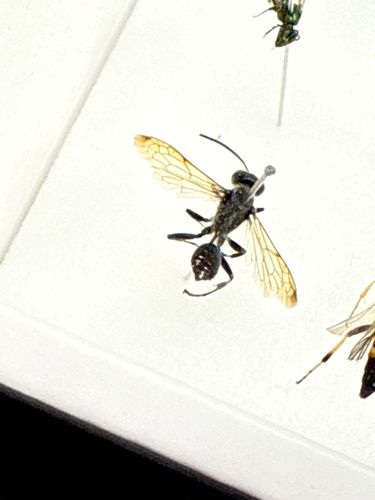Black Digger Wasp
Scientific Name: Chlorion aerarium
Order & Family: Hymenoptera, Sphecidae
Size: 19-38 mm (0.75-1.5 inches)

Natural Habitat
Open sandy areas, gardens, fields, and woodlands where they can dig burrows.
Diet & Feeding
Adults feed on nectar and pollen. Females hunt and paralyze large orthopterans (e.g., crickets, grasshoppers, katydids) to provision their nests for their larvae.
Behavior Patterns
Solitary wasps that construct burrows in the soil. The female digs a burrow, hunts a prey insect, stings it to paralyze it, and then drags it back to the burrow. She lays an egg on the paralyzed prey and seals the burrow. The larva feeds on the paralyzed insect. They are often seen flying low to the ground and searching for prey.
Risks & Benefits
Generally considered beneficial as they help control populations of pest orthopterans. They are not aggressive towards humans and typically only sting if directly provoked or handled. Their sting can be painful but is not usually medically significant unless there's an allergic reaction.
Identified on: 9/19/2025